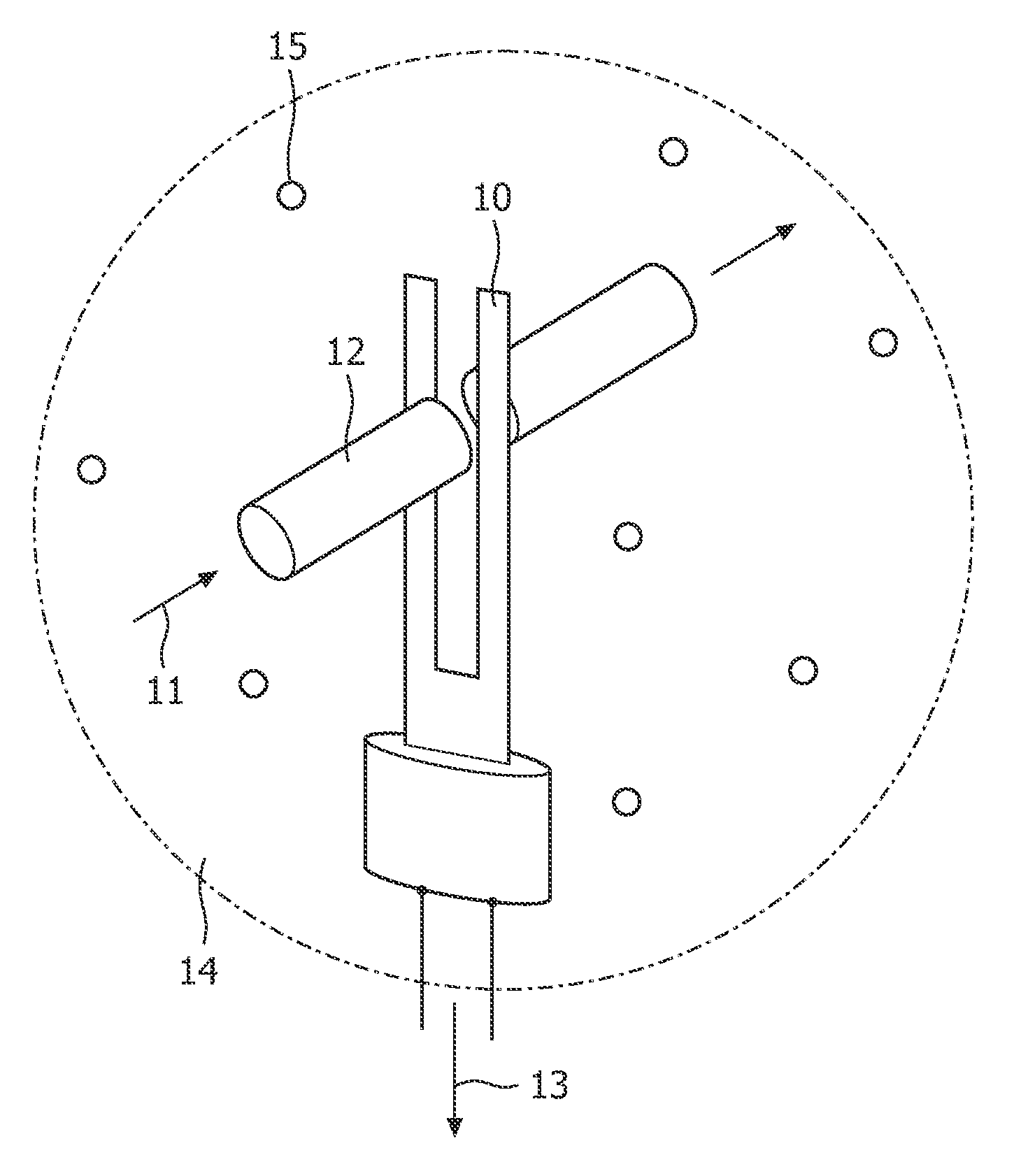Photo acoustic sample detector with background compensation
a background compensation and detector technology, applied in the field of photo acoustic detectors, can solve the problems of nosub>2 /sub>detection, inability to modulate wavelength modulation, and signal at the same frequency, and achieve the effect of improving background compensation
- Summary
- Abstract
- Description
- Claims
- Application Information
AI Technical Summary
Benefits of technology
Problems solved by technology
Method used
Image
Examples
Embodiment Construction
[0020]FIG. 1 shows a perspective view on part of a photo acoustic detector. An amplitude modulated laser beam 11 passes through a gas mixture 14. The gas mixture 14 comprises a low concentration of sample molecules 15. The laser beam 11 excites part of the sample molecules. Sample molecules returning from an excited state to the ground state cause a local temperature increase. The varying intensity of the laser light 11 causes pressure waves in the gas mixture 14. The pressure waves can be detected as sound waves using a resonant pickup element, e.g., in the form of a piezoelectric tuning fork10. The tuning fork 10 may be a quartz tuning fork. An acoustic resonator 12 amplifies the sound waves. The tuning fork 10 converts the sound signal into a detector signal 13 that is led to a processing unit, which will be described in detail with reference to FIGS. 3 and 4.
[0021]It is an advantage of the tuning fork 10, that it is much more sensitive and accurate in detecting the pressure wave...
PUM
| Property | Measurement | Unit |
|---|---|---|
| Angle | aaaaa | aaaaa |
| Length | aaaaa | aaaaa |
| Phase | aaaaa | aaaaa |
Abstract
Description
Claims
Application Information
 Login to View More
Login to View More - R&D
- Intellectual Property
- Life Sciences
- Materials
- Tech Scout
- Unparalleled Data Quality
- Higher Quality Content
- 60% Fewer Hallucinations
Browse by: Latest US Patents, China's latest patents, Technical Efficacy Thesaurus, Application Domain, Technology Topic, Popular Technical Reports.
© 2025 PatSnap. All rights reserved.Legal|Privacy policy|Modern Slavery Act Transparency Statement|Sitemap|About US| Contact US: help@patsnap.com



